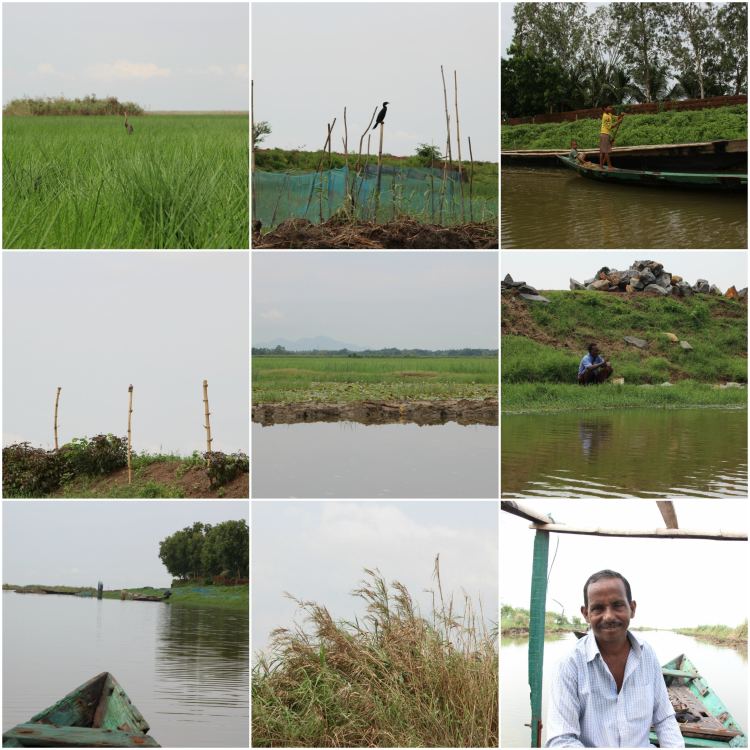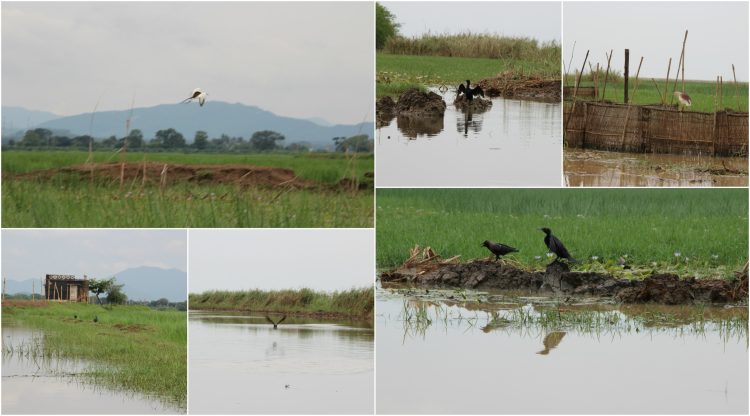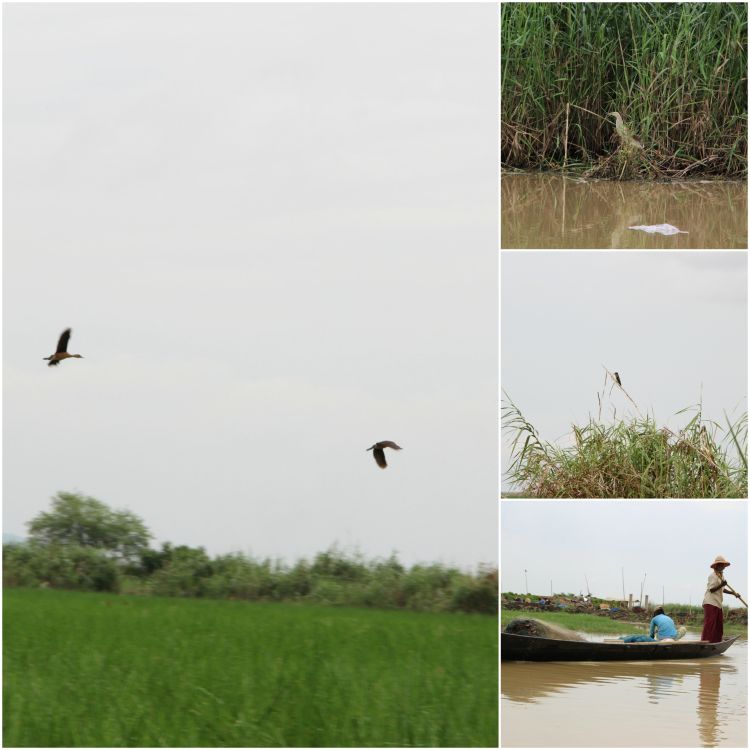All roads from every village, town and district in Odisha lead to Bhubaneswar. Bhubaneswar is the latest addition to the central government's aspirational list of smart cities. It already feels like a bustling metro. The people are all in a rush to get somewhere. After rushing around in the city, I found that for me, all the roads led back to the calmer towns, villages and districts. Unexplored, serene and beautiful locations waiting to be found like some of these hidden treasures below.
Mangalajodi
"Birds in their wave-swings break into song / Masses of birds fly in the sky / Like a cloud darkening your blue waters below" are the words of Odia poet Radhanath Ray from his famous poem Chilika. The words come alive when you find yourself engulfed by the beauty of Chilika lake.
Mangalajodi, a birds' haven, is a village tucked away in the Tangi block of the Khurda district in Odisha. Mangalajodi is the north-eastern entry point to Chilika, a 1000 sqkm lake on the eastern coast of Odisha. The lake is a popular winter destination for migratory birds from all over the world. From November to March, over a million birds seek shelter in Chilika.
Mukteswar, the nearest train station to reach Mangaljodi, is a station as sleepy as the town it belongs to. Even the ticket bookings begin 15 minutes before the arrival of the train. Mangalajodi ecotourism, a community-managed initiative, provides accommodation and boating facilities to visit Chilika.
On the boat ride we were accompanied by Mr Punyatantra Behera. A slight man, with eyes that told a thousand stories of a lifetime life spend at Chilika. He carried a small bag, a pair of binoculars, a field guide on Indian birds by Dr Salim Ali and a clean sheet to sit upon. We seated ourselves while balancing on the wobbly hand sailboat. As we cast off, the chirps of the unseen birds start mingling with the sound of the oars hitting the water. In that place, there could be no sweeter music.
As we enter the main channel to the lake, Mr Behera tells us that the channel has only recently been cleared off a lot of the weed. We pass a stretch covered by water lilies and Mr Behera begins pointing out birds. We see a passing egret. Soon, a pond heron is spotted too.

When we remarked at his knowledge of local bird varieties, he decided to reveal a bit more about himself. He told us that his interest in birds came from his profession as a poacher! For about five years, he captured birds and sold them at good rates - the bird-meat a rare delicacy in the area.
But very soon, the bird count suffered. In 1995, the census staff counted only 400 birds, and fewer migratory birds were visiting Chilika. Conservation steps followed and people like Mr Behera were roped in to protect the birds. After starting work as a guide, he has been participating in the census count. He proudly tells us that they counted over a lakh birds in the last census.
A purple peron is pointed to us in the swamp, between the overgrown grass. "It feeds on fishes, snakes and frog," Mr Behera adds.
Apart from being involved in bird conservation, Mr Behera tells us that he is a passionate collector of matchboxes, visiting cards and coins. He has picked up new matchbox covers from every city he has visited, helped by his sharp observation skills. He maintains a file that houses his collection, even winning him awards.
"The whole swamp is covered by birds if you come during the peak season," says Mr Behera. "Birds like black-tailed godwit, black-winged stilt come and sit on the boat!"

We pass a group of small birds - the bronze-winged jacana, bluetail bater, spotbill duck and the pheasant-tailed jacana. The book of Salim Ali which Mr Behera carries seems redundant, he knows everything there is to know.
We pass a watchtower which is usually manned by a security person. Even the fishermen are a part of conservation efforts, protective of the local ecology. More than 70 percent of the villagers around are are fishermen. Very few depend on farming.
Mr Behera mentions that his son is studying in Bhubaneswar to become a guide like him. A new gleam sparkles in his eyes when he talks about him. Even more proudly he tells us that the teacher who trained him was now teaching his son. The sense of pride is unmistakable. It is the well-earned pride of the one who has inspired others to join his cause.

We enter the last leg of our boating tour when we spot a little cormorant and a kingfisher. Suddenly, a motorboat whizzes by, off on a fishing sojourn. Worried, we ask Mr Behera if the noise of the diesel boats disturbed the fishes and birds.
"It does".
There was nothing more to add. Saving a place it seems is a continuous effort. Perhaps this place needed rehabilitation from the modern gadgets too.
Raghurajpur
At a distance of 15 kilometres from the town of Puri, the abode of lord Jagannath, is the heritage village of Raghurajpur. The small picturesque village is renowned for its art and cultural legacy. It is the place that produces the best Pattachitra art - Odisha's traditional scroll paintings.
At the entrance of the village, we are greeted by Mr Bijay Kumar Barik. An artist himself, his family has been involved in chitrakari or artwork for the last 15 generations. He points out that every family in the village is involved in producing exquisite art works of Pattachitra paintings, Saura art, palm-leaf inscriptions, stone and wood carvings, papier mache, applique, terracotta and more. The entrance of every house is decorated, detailing an intricate pattern or a mythological scene.

Mr Barik himself has won a national award for a painting that took him an year to produce. Smaller and less intricate Pattachitra paintings take 5-7 days to be completed, on an average. The painting is drawn over a piece of cotton cloth or pattaas. The cloth is first coated with gum, dried for a few days and then polished by hand. A design is drawn over it and painted. All the paints used are natural colours.
Mr Barik showed us the palette of colours he uses for the painting. The colour white is made from sea-shell powder, red from the Hengul stone, yellow from Harital stone, blue from Nilgiri stone and black from charcoal.The tint is strong enough to survive years.
The art of Pattachitra initially started in the form of Yatripatas, anecdotal telling of the life events of lord Jagannath. Over the years, it took a more complex form and started including other mythological tales. One also finds Buddhist influences in the 'Tree Of Life' Pattachitra paintings.

Today, Pattachitra paintings have found a national resonance. Mr Barik takes these paintings to many exhibitions and fairs across the country. He proudly tells us that he has been to Delhi a few times and has set up a permanent stall at the famed Dilli Haat - the market that houses the best of India's crafts. He also painted a wall in the Crafts Museum in Delhi. The brilliant and beautiful Cafe Lota accompanying the museum has a section designed by him. I make a mental note to be more observant the next time I visit that museum and cafe.
The visit to the village restores one's faith in the infinite creativity a human being. It is also a moment of pride see the legacy of these hand paintings in a time when computers are taking over different aspects of design.








